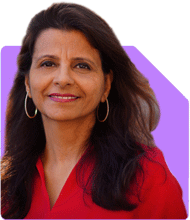81-Year-Old Man with Prostate Cancer Seeks Advice on Radiation Therapy
Dr Karthiyayini Mahadevan | Answer |Ask -Follow
General Physician - Answered on Jun 14, 2024
She specialises in general medicine, child development and senior citizen care.
A graduate from Madurai Medical College, she has DNB training in paediatrics and a postgraduate degree in developmental neurology.
She has trained in Tai chi, eurythmy, Bothmer gymnastics, spacial dynamics and yoga.
She works with children with development difficulties at Sparrc Institute and is the head of wellness for senior citizens at Columbia Pacific Communities.... more

I am 81 yrs, suffering from prostate cancer since last 6/7 months. I had earlier multiple health issues like Type 2 Diabetes (2yrs), Alzheimer's, Parkinsons plus, I have also heart issues with two stents inserted in 2014. I follow a very sedate lifestyle with walking for 45-55 mts + physical exercise 30 mts almost each day. I have been able to contain Alzheimer's and Parkinson's to almost 85-90% level and check Diabetes with food habits and walking to almost 70-75% level. . From 212 FPBS t has come down to 111 and PPBS currently is 78. I am focusing on prostate cancer. I wish to give some data for your reference: PSA- Total- from 4.14 it has come down to 1.89 Testosterone- from 585 it has come down to 0.660 reading of 20/05/24 I am strictly following my Urologists instructions so far. I am under his treatment for last 6/7 months. But he advices me to go in for MRI based Radiation therapy at HYD. I am extremely averse to any type of radiation therapy as the cells apparently are in sleeping mode with hormonal therapies but once I go in for radiation even if 85% cells die the balance surviving cells will attack my system vigorously and age will not be able to withstand their attack. Can I continue with hormonal therapies? Your advice please
So I suggest look into Naturopathy in addressing this issue along with lifestyle modification
Please have a positive attitude as Prostate Cancer relatively has better outcome after being treated with the hormonal therapy.
You may like to see similar questions and answers below
Dr Karthiyayini Mahadevan | Answer |Ask -Follow
General Physician - Answered on Apr 25, 2023
Dr Karthiyayini Mahadevan | Answer |Ask -Follow
General Physician - Answered on Jul 10, 2024
Dr Karthiyayini Mahadevan | Answer |Ask -Follow
General Physician - Answered on Aug 05, 2024
Dr Vinod Kumar | Answer |Ask -Follow
Kidney Health Specialist - Answered on Apr 28, 2024
Komal Jethmalani | Answer |Ask -Follow
Dietician, Diabetes Expert - Answered on Sep 21, 2024
Kanchan Rai |646 Answers |Ask -Follow
Relationships Expert, Mind Coach - Answered on Dec 12, 2025
Ravi Mittal |677 Answers |Ask -Follow
Dating, Relationships Expert - Answered on Dec 12, 2025
Ramalingam Kalirajan |10881 Answers |Ask -Follow
Mutual Funds, Financial Planning Expert - Answered on Dec 12, 2025
Ramalingam Kalirajan |10881 Answers |Ask -Follow
Mutual Funds, Financial Planning Expert - Answered on Dec 12, 2025
Reetika Sharma |423 Answers |Ask -Follow
Financial Planner, MF and Insurance Expert - Answered on Dec 12, 2025
Reetika Sharma |423 Answers |Ask -Follow
Financial Planner, MF and Insurance Expert - Answered on Dec 12, 2025
Reetika Sharma |423 Answers |Ask -Follow
Financial Planner, MF and Insurance Expert - Answered on Dec 12, 2025
Reetika Sharma |423 Answers |Ask -Follow
Financial Planner, MF and Insurance Expert - Answered on Dec 12, 2025
Reetika Sharma |423 Answers |Ask -Follow
Financial Planner, MF and Insurance Expert - Answered on Dec 12, 2025
Mayank Chandel |2572 Answers |Ask -Follow
IIT-JEE, NEET-UG, SAT, CLAT, CA, CS Exam Expert - Answered on Dec 11, 2025




























